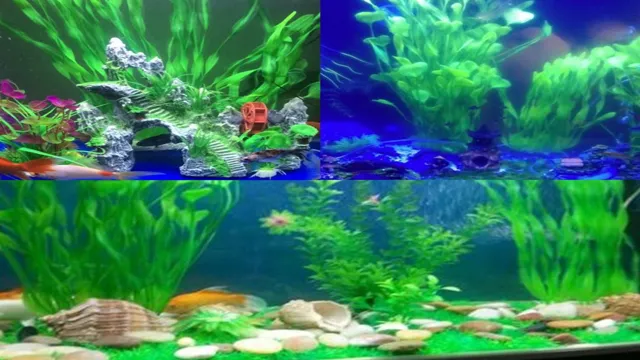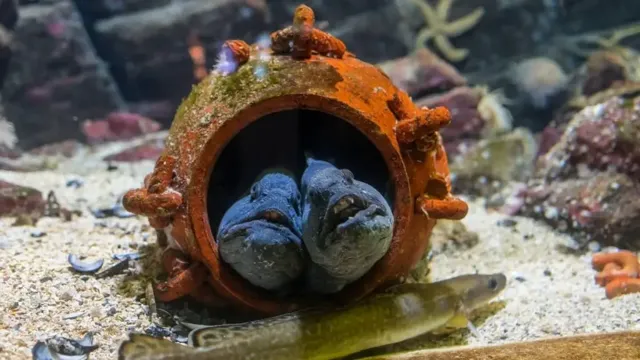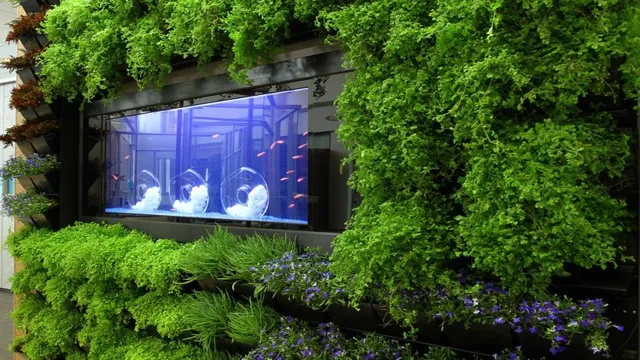How to Choose Aquarium Pump: A Comprehensive Guide for Beginner Aquarists
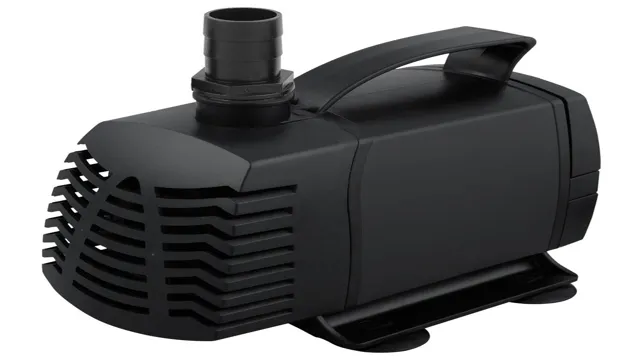
Aquariums are a beautiful addition to any home or office. The calming sound of trickling water and the serene environment that aquariums provide can help reduce stress and increase productivity. However, maintaining an aquarium requires more than just adding water and fish.
Choosing the right aquarium pump is crucial for the health and well-being of your aquatic friends. But with so many options available, how do you choose the right one? Think of an aquarium pump as the heart of your aquarium. It’s responsible for keeping the water oxygenated, filtering out debris, and maintaining a healthy environment.
When choosing an aquarium pump, consider the size of your tank, the types of fish you have, and the amount of water your aquarium holds. A pump that is too weak could result in poor water circulation, while one that is too powerful could create a current that is too strong for some fish. Another important factor to consider is the noise level of the pump.
Some pumps can produce a constant hum or buzzing sound, while others are virtually silent. Depending on where your aquarium is located, a noisy pump may be disruptive to your daily activities. Ultimately, choosing the right aquarium pump comes down to understanding the needs of your fish and creating a suitable environment for them.
By taking the time to research and choose the right pump, you can ensure the health and longevity of your aquatic friends.
Consider Your Tank Size and Volume
When it comes to choosing the right aquarium pump, the size and water volume of your tank are important factors to consider. A pump that is too weak may not be able to provide enough circulation for your tank, while a pump that is too strong can create a disruptive current and stress out your fish. To determine the best pump size for your aquarium, calculate the volume of water in your tank and choose a pump that can handle at least 5 times that volume per hour.
For instance, if you have a 20-gallon aquarium, the pump you choose should be able to handle at least 100 gallons of water per hour. Additionally, keep in mind the type of fish and plants you have in your tank. Some species require more current and oxygenation than others, so choose a pump that can meet their specific needs.
By taking into account your tank size, water volume, and the needs of your aquatic inhabitants, you can select a proper aquarium pump to keep your aquarium thriving.
Calculate the Gallons Per Hour (GPH)
Calculating the Gallons Per Hour (GPH) is crucial for efficient fuel consumption and preventing your engine from running dry. To determine your GPH, you need to consider your tank’s size and its volume. A larger tank may have a higher GPH to maintain the same speed as a smaller one.
Your engine’s fuel consumption rate is also a crucial factor in determining your GPH. Typically, engines with higher horsepower will consume more fuel and have a higher GPH. Moreover, a boat’s unique design and operational use also impact the GPH.
For instance, a sailboat cruising in calm waters will consume less fuel than a powerboat speeding through rougher waters. By calculating your GPH and considering your tank capacity and operational use, you can ensure optimal fuel consumption and engine performance.
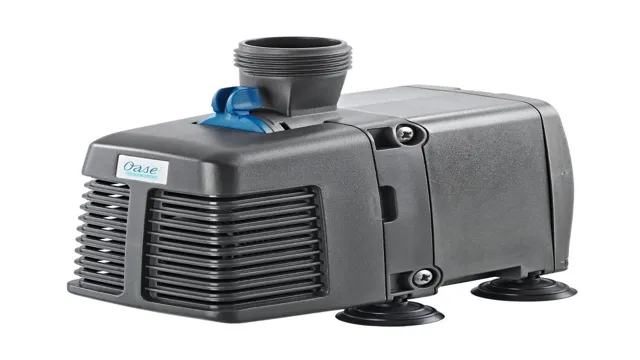
Determine the Pump Head Pressure
When it comes to determining the pump head pressure for your tank, one of the key factors to consider is your tank size and volume. This is important because it can impact the amount of pressure required to move water through your system, which can affect the overall efficiency of your pump. For instance, if you have a larger tank with a greater volume of water, you may require a higher pressure to ensure that the water is properly circulated and distributed throughout your system.
Conversely, if your tank is smaller with a reduced volume, you may be able to get away with a lower pressure setting. It’s important to strike the right balance between pressure and volume to ensure that your pump is operating optimally. By taking the time to evaluate your tank size and volume, you can set your pump up for success and enjoy better performance and results. (See Also: How to Make a Self Sustained Aquarium: Your Guide to Creating an Eco-Friendly Underwater Ecosystem)
Assess Your Filtration Needs
Choosing the right aquarium pump can be a daunting task, as there are many options to consider. First and foremost, it is important to assess your filtration needs. What type of fish and plants do you have in your aquarium? What size is your aquarium? Answering these questions will help you determine the flow rate necessary for your pump.
It is generally recommended to have a pump that can circulate the water in your aquarium at least three times per hour. You will also need to decide between submersible and external pumps. Submersible pumps are placed directly in the aquarium while external pumps are housed outside of the tank.
External pumps are generally more powerful and can handle larger aquariums. By considering your specific needs, you can make an informed decision on which aquarium pump is right for you. Don’t forget to also consider the ease of maintenance and the noise level of the pump before making your final decision.
Research Different Types of Filters
When it comes to assessing your filtration needs, the first step is to research the different types of filters available on the market. There are a wide variety of filtration systems available, each with their own unique advantages and disadvantages. Some of the most common types of filters include mechanical filters, biological filters, chemical filters, and UV filters.
Mechanical filters physically remove debris from the water, while biological filters use living organisms to break down waste. Chemical filters work by altering the chemical composition of the water, and UV filters use ultraviolet light to kill bacteria and other microorganisms. By understanding the strengths and weaknesses of each type of filter, you can determine which option will best meet your particular filtration needs.
Whether you’re looking to improve the quality of your drinking water or keep your aquarium clean and clear, there is a filter out there that is perfect for you. So take the time to research and assess your filtration needs today, and start enjoying the benefits of clean, clear water in no time!
Factor in the Pump’s Flow Rate
When it comes to choosing a pump for your aquarium or fish tank, it’s important to factor in the flow rate. The flow rate is the amount of water that the pump can move in a certain amount of time. Assessing your filtration needs can help determine the appropriate flow rate for your setup.
Consider the size of your aquarium and the types of fish and plants that inhabit it. Some aquariums require a higher flow rate to ensure proper oxygenation and circulation, while others may require a slower flow rate to prevent the disturbance of delicate plants or fish. It’s also important to consider whether you have a sump system or a hang-on-back filter, as these can affect the necessary flow rate as well.
Choosing the right flow rate is crucial to maintaining a healthy aquatic environment for your fish and plants. Too high of a flow rate can cause stress to your fish or prevent certain plants from growing properly, while too low of a flow rate can result in stagnant water and a buildup of harmful bacteria. Consider consulting with a professional or doing research online to determine the best flow rate for your specific setup.
Choose a Pump with Proper Filtration Capacity
When choosing a pump for your pool, one crucial factor to consider is its filtration capacity. Assessing your filtration needs is necessary as it helps you select a pump that can keep your pool clean and healthy. Filtration capacity is the amount of water that a pump can filter in a specific duration.
When choosing a pump, you need to understand your pool’s size, usage frequency, and bather load. These factors impact your filtration needs and directly affect your pool’s cleanliness and water quality. Therefore, it’s best to consult with a pool professional or read the pump’s specification to determine the filtration capacity required for your pool. (See Also: How to Build a Aquarium Stand from Wood: DIY Guide to Sturdy and Stylish Designs)
Choosing a pump with inadequate filtration capacity can lead to poor water conditions, increased energy consumption, and frequent maintenance requirements. Ensure that you choose the right pump to keep your pool crystal clear and free of harmful contaminants.
Look at Energy Efficiency and Noise Level
When choosing an aquarium pump, energy efficiency and noise level should be taken into consideration. An energy-efficient pump can save you money in the long run by consuming less electricity, while also being eco-friendly. Noise level is also an important factor, as a loud pump can disrupt the peaceful environment of your aquarium, and even irritate your fish.
When selecting a pump, look for one that is designed to operate quietly, such as those with vibration dampening technology. Additionally, pumps with variable speed options can help you adjust the flow rate without generating excessive noise. Choosing a pump that meets both energy efficiency and noise level needs will not only benefit your aquarium, but also your wallet and peace of mind.
Remember, from a cost standpoint, the most expensive may not always be the most energy-efficient pump available.
Compare Wattage and Energy Consumption
Comparing wattage and energy consumption can reveal a lot about the energy efficiency of different appliances. Wattage measures the amount of power an appliance uses, while energy consumption shows how much energy it uses over time. For example, an appliance with a high wattage may use more energy, but it may also be more energy efficient if it operates quickly and doesn’t waste energy.
Conversely, an appliance with a lower wattage may use less energy, but may be less efficient if it takes longer to complete its task. It’s also important to consider the noise level of an appliance as it can impact energy efficiency. A noisy appliance may require more energy to operate or may need to run for longer periods to achieve the same results, resulting in increased energy consumption.
By carefully comparing wattage and energy consumption, you can make informed decisions about which appliances to purchase and how to reduce energy usage in your home.
Consider Noise Output and Vibration Level
When shopping for new appliances, it’s not just about finding the most energy-efficient option. It’s important to also consider the noise and vibration levels of each appliance. A washing machine or dishwasher that’s too loud can be a major nuisance, especially if you have an open floor plan or a small home.
Look for appliances that are designed to be quiet, and read reviews from other consumers to get a sense of how much noise they produce. Some appliances also come equipped with vibration control technology, which can help prevent your floors from shaking or your wall from vibrating during use. By taking noise and vibration levels into account, you can ensure that your appliances won’t disrupt your daily routine or your peaceful home life.
Final Thoughts
Choosing the right aquarium pump can be a daunting task, but it’s an important one as it can greatly affect the health of your fish and the overall water quality in your tank. When considering what pump to buy, first determine the size of your tank and the flow rate that you need. Different types of pumps also have different features and benefits – for example, submersible pumps are great for smaller tanks as they are quieter and easier to install, while external pumps are better for larger tanks and can handle higher flow rates and provide better filtration.
It’s also important to consider the noise level, energy consumption, and maintenance requirements of the pump. Ultimately, choose a pump that fits your needs and budget, and don’t hesitate to ask for advice from a trusted aquarium expert. With the right pump, you’ll keep your fish healthy and happy in a clean and thriving aquarium.
Conclusion
In conclusion, choosing the right aquarium pump is like picking the perfect dance partner. You want someone who can keep up with your moves and make sure the rhythm stays smooth. Similarly, you want an aquarium pump that can keep up with your tank’s needs and maintain a healthy environment for your aquatic friends. (See Also: How to Go to Aquarium: A Comprehensive Guide for an Unforgettable Experience)
So, take your time, consider the flow rate, noise level, and power consumption, and make sure to pick the pump that will keep your aquarium dancing the night away.”
FAQs
What factors should be considered while choosing an aquarium pump?
Some factors to consider while choosing an aquarium pump include the size and type of the aquarium, the flow rate required, energy consumption, and noise level.
What is the ideal flow rate for an aquarium pump?
The ideal flow rate for an aquarium pump depends on the size of the tank and the type of fish and plants in it. A general rule of thumb is to choose a pump that can move the entire tank’s water volume at least once per hour.
Is it important to choose an energy-efficient aquarium pump?
Yes, it is essential to choose an energy-efficient aquarium pump as it can significantly reduce your electricity bill and save money in the long run.
What is the difference between submersible and external aquarium pumps?
Submersible aquarium pumps are placed directly in the water, while external pumps are housed outside the aquarium. External pumps are generally more powerful and have a higher flow rate, but submersible pumps are more accessible to maintain.
Can an aquarium pump be too powerful for the tank?
Yes, an aquarium pump can be too powerful for the tank, leading to excessive water flow, which can stress or harm fish and plants. It’s essential to choose a pump with the right flow rate for your tank’s size and occupants.
How often should an aquarium pump be cleaned?
It’s recommended to clean the aquarium pump and its components regularly, at least once a month, to prevent build-up and clogging and keep it running efficiently.
What should be done if the aquarium pump stops working?
If the aquarium pump stops working, check if it’s correctly plugged in and if the impeller is clogged. If the issue persists, it might be time to replace the pump with a new one.

